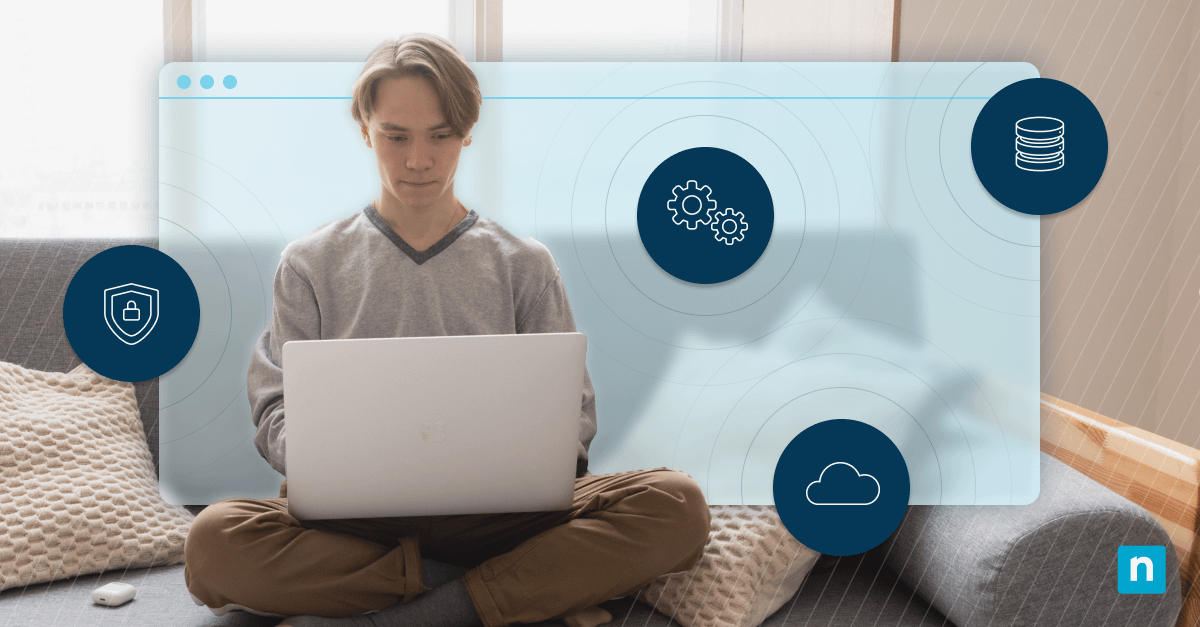The Windows 11 lock screen is the first interface you see when starting your device or locking your system. While it adds visual appeal and provides quick access to information like time, date, etc., some users may prefer to skip it for faster access or a more personalized experience.
Disabling the lock screen can streamline the login process but may also reduce security, especially on shared or unattended devices. This guide will show you how to enable or disable lock screen in Windows 11 if you want to manage your lock screen settings.
How to enable or disable the Windows 11 lock screen
Before proceeding, keep the following in mind:
- You need administrative rights to make these changes. Make sure you’re logged in with an account that has administrative privileges.
- The Local Group Policy Editor method is available only in Windows 11 Pro, Enterprise, and Education editions. If you’re using Windows 11 Home, use the Registry Editor method instead.
- Back up the registry before making any changes to avoid potential system issues.
Method 1: Using Local Group Policy Editor (Windows 11 Pro, Enterprise, and Education)
This method works only on Windows 11 Pro, Enterprise, and Education editions. It’s ideal for IT administrators and advanced users who want centralized control over system settings.
- Press Win + R to open the Run dialog box.
- Type gpedit.msc and click Enter to open the Local Group Policy Editor.
- Navigate to: Computer Configuration > Administrative Templates > Control Panel > Personalization
- Double-click Do not display the lock screen.
- Select Enabled to disable the lock screen. To enable it, select Disabled.
- Click Apply > OK.
- Close the editor, then restart your computer for the changes to take effect.
Method 2: Using Registry Editor (All Windows 11 editions)
For users on any edition of Windows 11, including Home, the Registry Editor provides an easy way to enable or disable the lock screen.
⚠️ Warning: Editing the registry can cause system issues if done incorrectly. Always back up the registry before making changes.
- Press Win + R to open the Run dialog box.
- Type regedit and click Enter to open the Registry Editor.
- Navigate to: HKEY_LOCAL_MACHINE\SOFTWARE\Policies\Microsoft\Windows
- Right-click Windows.
- Select New > Key, and name it Personalization.
- Right-click the newly created Personalization key.
- Select New > Key > DWORD (32-bit) Value, and name it NoLockScreen.
- Double-click NoLockScreen and set its Value data:
- 1 = Disable the lock screen
- 0 = Enable the lock screen
- Close the Registry Editor and restart your computer.
Additional considerations
Enabling or disabling the lock screen in Windows 11 can impact usability, security, and the overall user experience. Here are a few important points to consider to help you make an informed decision.
Secure Sign-In
If your system is set to require Secure Sign-In (Ctrl + Alt + Delete) before logging in, the lock screen can’t be fully disabled. This security feature ensures that only authorized users can proceed to the sign-in interface.
Multiple displays
The lock screen only appears on the primary display. If you use a multi-monitor setup, the secondary screens will remain blank or show a static background while the lock screen is active. This is an expected behavior and cannot be altered through standard settings.
User experience
Disabling the lock screen removes certain features, including:
- Windows Spotlight – A Windows feature that automatically updates background images on the lock screen. It also provides fun facts, tips, and suggestions related to the images displayed.
- Quick status notifications – These are updates from select apps that appear on the lock screen. They provide useful information, such as calendar events, emails, weather updates, and alarms.
Troubleshooting common issues
Issue: Secure Sign-In is blocking lock screen removal
Secure Sign-In is an added layer of security in Windows 11 that requires users to press Ctrl + Alt + Delete before signing in. If this feature is enabled, it prevents the lock screen from being fully disabled, even if you’ve made the correct registry changes.
Here’s how to turn it off:
- Press Win + R to open the Run dialog box.
- Type netplwiz and click Enter to open User Accounts.
- Go to the Advanced tab.
- Under Secure sign-in, uncheck Require users to press Ctrl + Alt + Delete.
- Click Apply, then OK.
- Restart your computer.
Issue: Registry change not taking effect
If you’re using Registry Editor to disable the lock screen but nothing changes, the issue can be due to an incorrect registry path or missing value. Ensure that the registry key exists:
HKEY_LOCAL_MACHINE\SOFTWARE\Policies\Microsoft\Windows\Personalization
Also, ensure there’s a DWORD (32-bit) value named NoLockScreen with its value set to 1. Then, restart your computer to apply changes.
Issue: The lock screen still appears after sleep or wake
Disabling the lock screen at startup doesn’t always affect behavior when the device wakes from sleep or locks automatically. This behavior is managed through sign-in settings:
- Press Win + I to open Settings.
- Go to Accounts > Sign-in options,
- Click the If you’ve been away, when should Windows require you to sign in again? dropdown.
- Select Never.
Managing lock screen settings in Windows 11
Enabling the lock screen in Windows 11 adds a layer of protection against unauthorized access and helps maintain privacy, especially on shared devices. On the other hand, disabling it allows quicker access by skipping this extra step, ideal for personal or non-sensitive systems. While removing the lock screen can streamline your workflow, weighing the security implications and user experience is essential.
Depending on the system’s edition, you can enable or disable the lock screen in Windows 11 using the Local Group Policy Editor or the Registry Editor. Just be sure to back up the registry before making changes. Weigh the balance between convenience and security and decide whether to enable or disable the lock screen.








